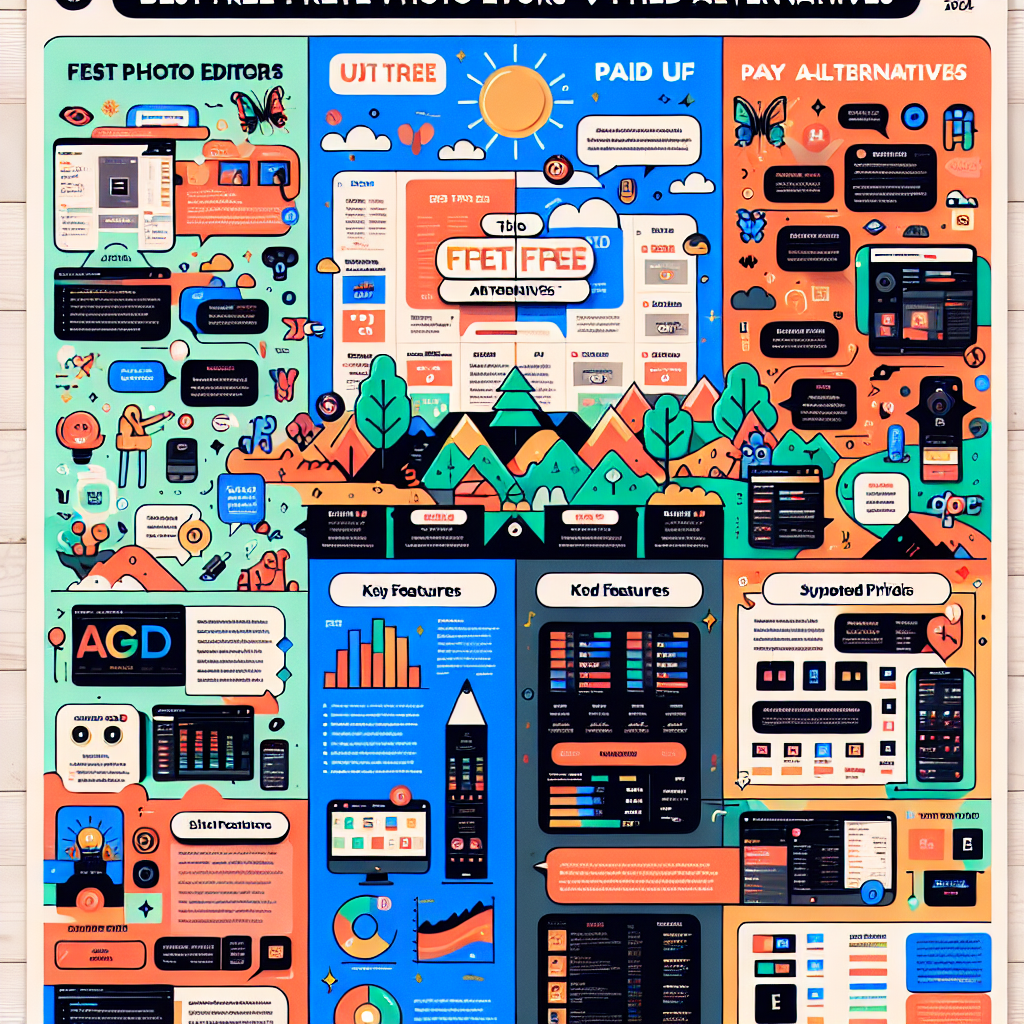Compare Best Free Photo Editors vs Paid Alternatives: Which Should You Choose?
In today’s digital world, photo editing tools are essential for everyone from casual users to professional photographers. But with so many options, it can be challenging to decide between the best free photo editors and their paid counterparts. In this comprehensive guide, we’ll compare best free photo editors vs paid software, highlighting their advantages, limitations, and which might suit your creative needs best. Whether you’re searching for free image editing software, advanced photo manipulation tools, or want to know the most popular options in 2024, this article covers it all.
Why Compare Free vs Paid Photo Editors?
The market for photo editing software is vast, with both free and paid solutions offering impressive features. By comparing the best free photo editors versus paid alternatives, users can make informed choices based on their needs, budget, and desired creative control.
- Cost savings: Free editors can be appealing for those on a budget or just starting out.
- Feature set: Paid tools often offer advanced editing capabilities, but some free programs are surprisingly robust.
- Learning curve: Some software is more beginner-friendly than others.
- Long-term investment: Consider if future upgrades or professional use are important for your workflow.
Top Free Photo Editors in 2024
Looking for the best free photo editor? Here are the most popular and highly rated options this year, each offering a unique set of tools for image enhancement, retouching, and graphic design:
1. GIMP (GNU Image Manipulation Program)
- Pros: Open-source, powerful, supports layers, customizable via plugins.
- Cons: Interface may be overwhelming for beginners.
2. Paint.NET
- Pros: User-friendly, lightweight, supports layers and effects.
- Cons: Advanced features limited compared to paid software.
3. Photopea
- Pros: Browser-based, PSD support, similar to Photoshop.
- Cons: Online only, ads may distract.
4. Canva (Free Version)
- Pros: Intuitive, excellent templates, perfect for social media.
- Cons: Limited manual photo editing tools.
Leading Paid Photo Editors
While free options are impressive, some users need more advanced features, seamless workflows, or professional support. The following are the top paid photo editing software in 2024:
1. Adobe Photoshop
- Pros: Industry standard, advanced tools, extensive plugin ecosystem.
- Cons: Subscription-based, steep learning curve.
2. Affinity Photo
- Pros: One-time purchase, pro-level features, regular updates.
- Cons: Slightly less comprehensive than Photoshop for certain tasks.
3. Corel PaintShop Pro
- Pros: User-friendly, affordable, powerful AI tools.
- Cons: Windows only, not as widely adopted by professionals.
Feature Comparison: Free vs Paid Photo Editors
| Feature | Best Free Photo Editors | Paid Photo Editors |
|---|---|---|
| Layers & Masks | Available (GIMP, Paint.NET) | Advanced, Non-destructive |
| RAW File Support | Limited | Full Support |
| AI Tools (Enhance, Remove) | Basic or Absent | Cutting-edge AI Features |
| Batch Processing | Limited | Extensive |
| Custom Brushes/Filters | Yes, with plugins | Yes, advanced |
| Learning Resources | Community-driven | Official + Community |
As the table shows, paid editors generally provide more advanced features, especially for professionals. Still, the best free photo editors offer plenty for everyday use.
Ease of Use and User Experience
When comparing free vs paid photo editors, usability is a significant factor. Free tools like Canva and Paint.NET are praised for their user-friendly interfaces, making them ideal for beginners. On the other hand, applications like GIMP can feel complex, though they offer powerful capabilities once mastered.
Paid editors such as Photoshop and Affinity Photo are designed for professionals, but their polished interfaces and extensive tutorials help users at every skill level.
Community & Support
Support and learning resources are vital for mastering any photo editor. Free software often relies on active user communities, forums, and unofficial tutorials. In contrast, paid software provides dedicated customer support, regular updates, and a wealth of official training materials.
Who Should Choose Free or Paid Editors?
- Free Editors: Ideal for students, hobbyists, and those editing photos occasionally. Perfect for basic to moderate image adjustments and graphic design.
- Paid Editors: Best for professionals, photographers, designers, and those who need advanced retouching, RAW processing, and workflow efficiency.
Consider your goals and the type of projects you handle before making a decision. If you’re starting or have a tight budget, try several free options first.
Final Verdict: Which Photo Editor Is Best for You?
To compare best free photo editors vs paid alternatives is to weigh your creative needs, technical requirements, and budget. Free photo editors like GIMP and Photopea are more capable than ever, offering versatile solutions for most users. However, paid tools like Adobe Photoshop and Affinity Photo remain the go-to for professionals seeking advanced control, robust support, and time-saving features.
Our advice? Start with a free photo editor, explore its capabilities, and upgrade to a paid tool if you outgrow it. The best photo editor is the one that fits your workflow and inspires your creativity!
FAQ: Compare Best Free Photo Editors vs Paid Alternatives
- Are free photo editors safe to use?
- Yes, reputable options like GIMP, Paint.NET, and Photopea are safe and widely used.
- Can free photo editors handle RAW files?
- Some free editors offer basic RAW support, but paid tools provide more comprehensive options and better color management.
- Is there a free photo editor similar to Photoshop?
- Photopea and GIMP both offer interfaces and features similar to Photoshop, making them excellent free alternatives.
- Do paid photo editors offer better results?
- Paid editors typically provide more advanced features, higher-quality output, and better integration with professional workflows.



